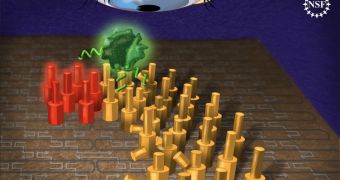Molecular computing and robotics are at this point two of the main emerging fields of research in electronics, and numerous research teams around the world are currently working on improving them. Such was the case with a team of US scientists, featuring experts from the Columbia University, the Arizona State University, the University of Michigan, and the California Institute of Technology (Caltech). Researchers here managed to construct and program a new type of molecular robots, which are capable of moving on their own across a nanoscale track. The innovation is bound to improve these two fields considerably, the scientists say.
“Can you instruct a biomolecule to move and function in a certain way – researchers at the interface of computer science, chemistry, biology and engineering are attempting to do just that,” explains of the recent investigation US National Science Foundation (NSF) program director Mitra Basu. The official oversees the Foundation's contribution to this study. Details of the new robots are published in the May 13 issue of the esteemed scientific journal Nature.
If molecule-sized robots become easy to manufacture and program, then we could witness the rise of a new age in medicine and nanotechnology. The goal here is to produce controllable instruments that could alter single molecules, as well as assemble other forms of nanotechnology. Outfitted with clamp-like structures, these nanorobots could become capable of producing larger structures out of nanoscale components. This means that various implants could be assembled directly into the human body, without the need for intrusive surgery. But even if researchers know that this day is coming, they say that some time will pass until the new technologies finally begin to make a difference.
“This work one day may lead to effective control of chronic diseases such as diabetes or cancer,” Basu believes. According to Milan N. Stojanovic, the expert who led the team behind the new investigation, such studies necessarily require the contribution of experts from numerous fields. He explains that physicists or chemists alone cannot solve the complex issues that are associated with producing functional robots at such incredibly-small scales. “If you take anyone of us with our disciplinary expertise out of this, this paper would have collapsed and never be what it is now,” he says. Stojanovic is based at the Columbia University, where he holds an appointment as a faculty member in the Division of Experimental Therapeutics.

 14 DAY TRIAL //
14 DAY TRIAL //